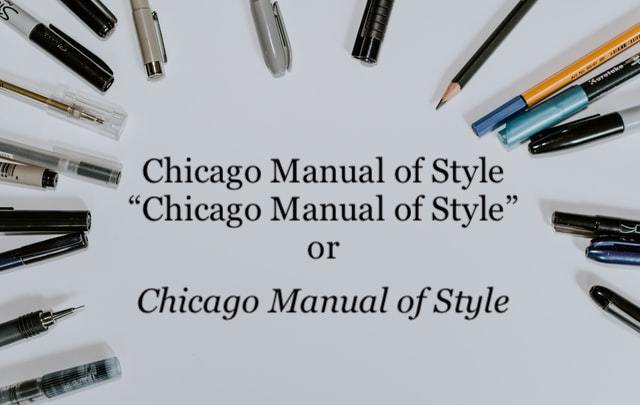As Copy Chief at Ooligan Press, I am often faced with titles in the documents I edit. This can include book titles for blurbs, comp titles in marketing plans, media outlets in tipsheets, and a variety of references in blog posts like this one. Some of these are easy to remember. For example, book titles are set in italics according to The Chicago Manual of Style; however, if we are posting to social media, the book title should be entirely capitalized as italics is more difficult in a caption on those platforms. In addition, if I am editing something like a press kit, I need to make sure that the book titles are formatted according to the AP Stylebook and are in double quotes instead. Balancing these style guides and mediums can make it difficult to remember how titles are formatted. In addition, we read content all the time that doesn’t align to any style guide at all and title formatting is based on what the author may vaguely remember from high school. This guide will help clear up some of that confusion and create a document that you can refer back to whenever you come across this problem in your own writing or editing.
As a general rule, Chicago suggests “italics to set off the titles of major or freestanding works such as books, journals, movies, and paintings. . . . the names of ships and other craft, species names, and legal cases.” In addition, they recommend “Quotation marks are usually reserved for the titles of subsections of larger works—including chapter titles and article titles and the titles of poems in a collection.” Further, some titles do not need to be formatted in italics or quotation marks at all, such as “a book series or a website, under which any number of works or documents may be collected.” Chapter 8.2 of The Chicago Manual of Style establishes this general rule and presents us with a backdrop against which we can make future editorial decisions.
Italics
- Names of single volume books: “I enjoyed reading The Book Thief.”
- Names of multivolume work and individual volumes within a multivolume work
- Names of the titles of the works in the collection, in a collection of works that features works that were published as separate books: “The introduction to the Critique of Pure Reason in Kant’s Collected Works . . .”
- Names of pamphlets, reports, and similar freestanding publications
- Names of periodicals such as newspapers
- Names of magazines, journals, reviews (unless the words “magazine,” “journal,” or “review” are in the name of the publication these words are not italicized; for example, Time magazine)
- Names of a very long poetic work, especially one constituting a book: Dante’s Inferno
- Names of plays
- Names of blogs and video blogs
- Names of books that have online or website equivalent: The Chicago Manual of Style Online; the online edition of The Chicago Manual of Style
- Names of video games
- Names of operas, oratorios, tone poems, and other long musical compositions
- Names of movies (or films) and movie series and of television, radio, and podcast programs and series
Quotation Marks
- Names of articles and features in periodicals and newspapers, chapter and part titles, titles of short stories or essays, and individual selections in books
- Names of (most) poems: Robert Frost’s poem “The Housekeeper” in his collection North of Boston.
- Names of individual blog posts
- Names of folktales, fables, fairy tales, and nursery rhymes
- Names of songs and other shorter musical compositions
- Names of a single episode in a television, radio, or podcast series
- Names of titled sections, pages, or special features on a website
No Italics Or Quotation Marks
- Names of book series
- Names of regular columns or departments in periodicals
- Names of websites: Wikipedia; Wikipedia’s “Let It Be” entry; Wikipedia’s entry on the Beatles’ album Let It Be
- Names of networks, channels, and streaming services
In general, longer form content or content that has other works within it should be set in italics, while the short form content or works within works should be set in Roman type with quotation marks. When in doubt, check The Chicago Manual of Style. Happy writing and editing!

